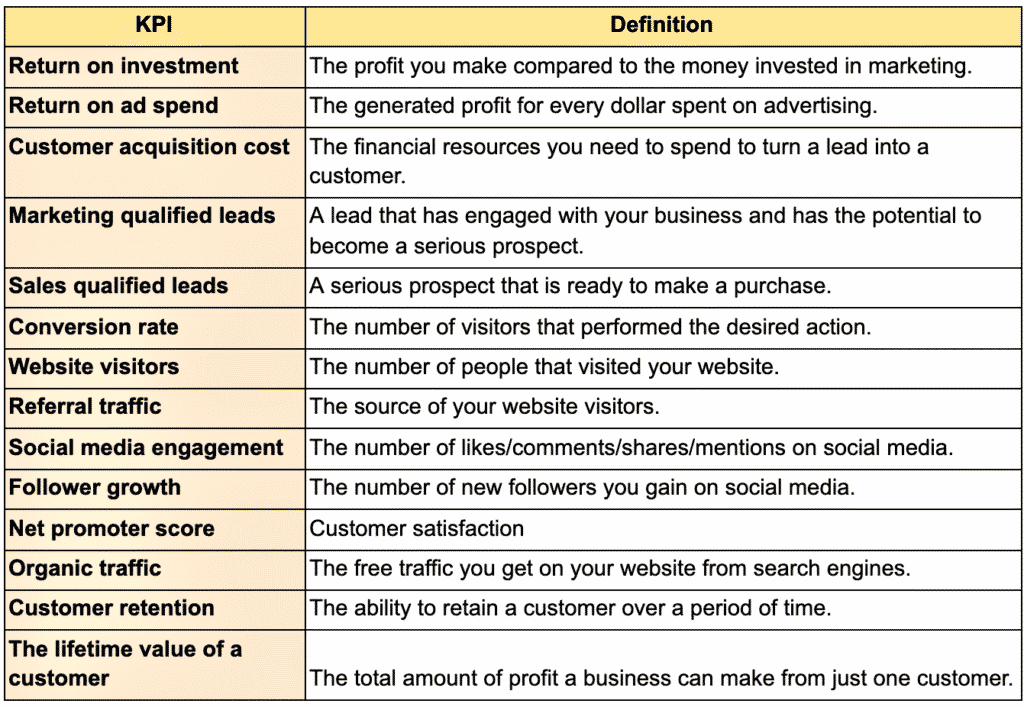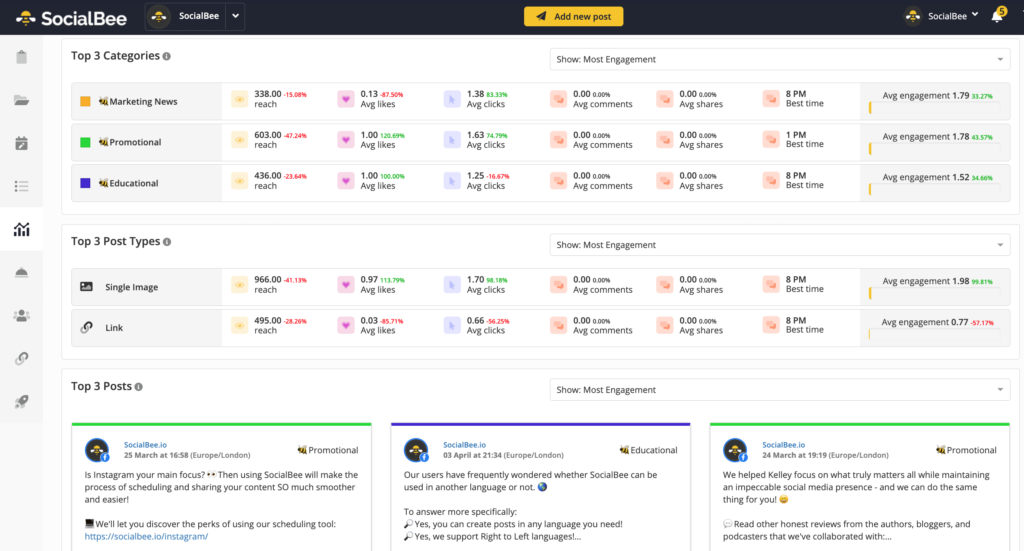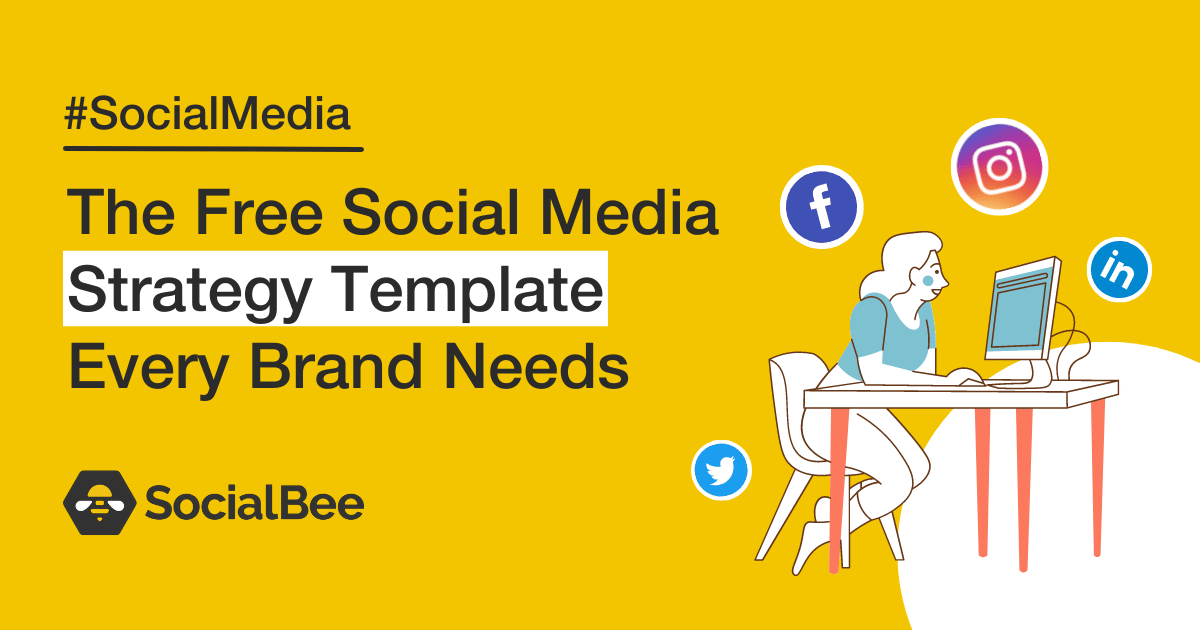
CONTENT WRITER
What came first: the marketing objectives or the marketing plan? That is the question. To us, the answer is obvious — marketing objectives come before your company’s marketing plan.
Why? Because you can’t achieve something that you don’t define.
For this reason, we decided to provide clear marketing objectives examples that will help you:
- Structure your business objectives properly
- Add focus to your marketing efforts
But first, let’s see how one defines marketing objectives.
Download the Marketing Calendar Template!

Marketing Objectives, Defined
What are marketing objectives, you ask?
They are the outcomes that the marketing team plans to achieve in the future. As such, they outline both a clear direction for the marketing strategy and the specific actions that need to be taken to reach the desired results. Therefore, great smart marketing objectives must be:
Specific
Focus on what you want to achieve and how you want to achieve it.
Measurable
Identify KPIs that will help you measure your progress.
Attainable
Aim for a target that is ambitious but realistic.
Relevant
Make sure your objectives align with your business needs.
Time-based
Set a deadline for your objectives to help you stay focused on achieving them in a limited time frame.
| SMART objective example: “We will grow our Facebook audience by gaining 100 followers every month for the next 3 months.” |
What Are Marketing KPIs?
Now that you know how to write down your business ambitions, let’s move on to our next important lesson: how to measure marketing objectives.
As we mentioned in the ‘Measurable’ stage, marketing KPIs (or Key Performance Indicators) are values that help you monitor your progress and find out if you are on the right track for achieving your marketing goals.
To be more specific, let’s go back to our previous SMART objective example: “We will grow our Facebook audience by gaining 100 followers every month for the next 3 months.”
The KPI from this SMART objective is the number of new followers approximated (follower growth).
Here are the main marketing KPIs you should use to evaluate the progress you made in achieving your marketing objectives:
- Return on investment – The profit you make compared to the money invested in marketing.
- Return on ad spend – The generated profit for money spent on advertising.
- Customer acquisition cost – The financial resources you need to spend to turn a lead into a customer.
- Marketing qualified leads – A lead that has engaged with your business and has the potential to become a serious prospect.
- Sales qualified leads – A serious prospect that is ready to make a purchase.
- Conversion rate – The number of visitors that performed the desired action.
- Website visitors – The number of people that visited your website. Note: remember that website visitors can return to your website for a second, third visit. Hence, it’s important you split your audience into “New Visitors” and “Returning Visitors” in Google Analytics.
- Referral traffic – The source of your website visitors.
- Social media engagement – The number of likes/comments/shares/mentions on social media.
- Follower growth – The number of new followers you gain on social media.
- Net promoter score – Customer satisfaction or customer loyalty
- Organic traffic – The free traffic you get on your website from search engines.
- Customer retention rate – The ability to retain a new customer over a period of time.
- Number of new customers: The number of new customers acquired over a certain period;
- The lifetime value of a customer – The total amount of profit a business can make from just one customer.

To monitor your progress, you also need to pay attention to the data that shows you in real-time the progress you make towards your objectives.
SocialBee Helps You Track Your Social Analytics
With SocialBee you can create, schedule, and post your social media content on your favorite social networks and also evaluate your performance constantly.
The analytics dashboard allows you to monitor your social media growth from one dashboard.
Start your free 14-day trial to monitor your profiles from one user-friendly dashboard!
Work on Your Social Media Objectives with SocialBee!
11 Marketing Objectives Examples
Now that we know how to define marketing objectives and what makes them valuable to a marketing strategy, let’s have a look at 11 examples of marketing objectives that you should use for your business.
1. Increase Sales
If you are a business that sells products or services, your main focus will be to make more profit by selling more of what you have to offer.
To do so, you have several marketing initiatives at your disposal that help you attract new customers and increase your sales down the line (e.g. running ads, increasing website visitors, starting a limited promotion, distributing interactive digital catalogs).
It all depends on how much you want to achieve in a limited timeframe with your current sales process and the means available to you. Don’t forget to always measure customer acquisition with each new campaign or process you launch.
| Example of an increasing sales objective: “Boost sales by 10% in the next three months by increasing website traffic with the help of weekly promotional social posts.” |
2. Generate Brand Awareness
Are you looking to get your brand noticed? In this case, you might want to grow your brand awareness. This will help you establish your business as a trustworthy entity.
By generating brand awareness you get your target audience interested in your business — the first step that allows you to turn leads into paying customers.
Having your target audience recognize, remember, and associate your business with key values means that you become their top-of-mind when they are considering making a purchase.
| Example of a brand awareness objective: “Increase brand awareness by sharing our blog posts once a week for the following six months on Facebook, LinkedIn, and Google My Business.” |
3. Increase Market Share
Market share represents the percentage of a market dominated by a business. More exactly, the market share of a business is the number of sales made in a limited time frame compared to the total sales in the industry.
For example, if there are 100 chairs sold every week, and a business sells 40 chairs a week, it means that the business in question has a market share of 40%.
Market share is important for any business because:
- It develops a cost advantage against the competition.
- It increases sales and profitability.
- It expands the customer base and helps you find a new market for your products and services.
- It boosts brand awareness and authority.
| Example of a market share objective: “Obtain a 10% increase in the market share for product X by the end of the year by lowering its price by 10%.” |
4. Boost Customer Retention Rates
Focusing on customer loyalty is as important as gaining new customers. Moreover, experts say that it’s even more cost-effective to keep a customer than it is to gain a new one. A business can pay up to 25% more to gain a new customer than to maintain one.
Having a loyal customer base offers stability to a business by providing a consistent revenue stream.
To keep your customers interested in what you have to offer, you can invest in the quality of your customer service, improve your community management on social media, develop a loyalty program, and more.
If you want to keep your Instagram community happy and engaged, SocialBee has the perfect service for you that allows you to interact with your customers without the work that comes with it.
| Example of customer retention objective: “Increase customer retention rates by 30% in a year by developing a loyalty program.” |
5. Generate New Leads
Attracting new leads increases your chances of gaining new customers and ultimately selling more of your products and services. Also, it keeps your business relevant and profitable.
Lead generation is a practice that draws new prospects to a brand and maintains their interest through lead nurturing.
A great way of generating new leads for your business is by creating lead magnets (offers such as free guides, templates, and free consultations customers can benefit from by revealing their contact information) and posting them on your blog and social media accounts. This will fill your client relationship management (CRM) system with qualified prospects.
With the help of marketing communication strategies, interactive content, and practices such as influencer collaborations, the leads start to trust and connect with a brand and ideally become paying customers.
| Example of a lead generation objective: “Generate 50% more leads in the following six months by collaborating with five niche Instagram influencers.” |
6. Gain More Website Traffic
Your website is a valuable part of your business and marketing strategy. It is part of your image, it communicates your brand identity, and most importantly is where you convert your leads into customers.
That is why businesses tend to focus on getting as much traffic to their website as possible through both paid initiatives and organic strategies.
| Example of website traffic objective: “Increase website traffic by 15% in the next two months through link building and social media posts.” |
7. Increase Profits
All marketing efforts focus on generating profit. Sometimes, smart financial decisions include both reducing costs and investing resources in profitable marketing tools (ads, for example).
Ideally, businesses should find a balance between paid and organic strategies and constantly monitor what works best for their needs. To do so, marketers can regularly calculate the return on investment (ROI) for the tools and services they use in their strategy, as well as the customer acquisition cost (CAC).
| Example of profit increase objective: “Reduce the cost of paid ads by 20% for the following year and focus on SEO practices by starting a blog. |
8. Develop a Social Media Presence
Social media has become the perfect environment for business growth. With more and more users turning to social media to research businesses before making a purchase, there is no doubt about the impact it has on business growth, brand awareness, and brand authority.
Don’t forget to use social media management tools like SocialBee to create, schedule, and post your content. Thus, you will stay consistent and improve your reach and engagement rate.
| Example of a social media marketing objective: “Post three times a week on Facebook, Instagram, and LinkedIn for the next 12 months to gain 100 new followers each month.” |
9. Grow Your Email List
Email marketing is a powerful marketing channel. With more than four billion users and an ROI of $42 for every dollar spent, it’s safe to say that it’s a great marketing investment.
The best part about email marketing is that you can easily measure if it’s working or not because you know exactly who received your email and the actions they took once they saw it.
To create great email marketing campaigns, you have to:
- Have a significant email list.
- Invest in an email service provider.
- Use powerful subject lines.
- Create an engaging copy.
| Example of email marketing objective: “Double our email list within the next three months by creating a lead magnet and promoting it on our website.” |
10. Optimize Brand Positioning
Last but not least on our list of marketing objective examples — brand positioning.
Positioning your brand is extremely important, as it controls the way your audience views and perceives your business. Also, it helps businesses stand out from the crowd and differentiates their products and services from the competition.
Furthermore, setting goals and focusing on brand positioning should be a priority for your marketing team, as it helps you manage your reputation and brand image.
| Example of brand positioning objective: “Create a strong brand positioning statement and communication strategy by the end of the month so that our employees understand the differentiating factors of our business.” |
11. Increase Customer Lifetime Value
In order to get more value from your customers and increase AOV (average order value) you have two options: cross-sell and upsell.
Put in simple terms, you’re encouraging your customers to add more products/ services to their part, whether it’s for a complementary service you have (cross-sell) or for a higher tier of the same service (up-sell).
Before asking your customers to do so, make sure they need those services and that they might be willing to expand their budget in this direction. One way to make sure your customers stay open to such purchases is to ensure an excellent post-sale experience.
| Example of increasing customer lifetime value objective: “Offer a customer loyalty program with rewards and points that can be used at your customers’ second purchase.” |
You Got This
Now that you know all about setting smart business goals through the power of 11 strong measurable marketing objectives examples, you are all set to go.
So, make sure you start the path to a successful marketing strategy with clear and measurable objectives. Define what you want to achieve, and you will have a way to measure success and maintain it by adjusting your marketing plan as you go. To put it in other words, the secret is to track marketing objectives.
Don’t forget that SocialBee can bring you closer to your marketing goals. Start your 14-day free trial today and build a social presence that will help you increase brand awareness and generate more leads.














